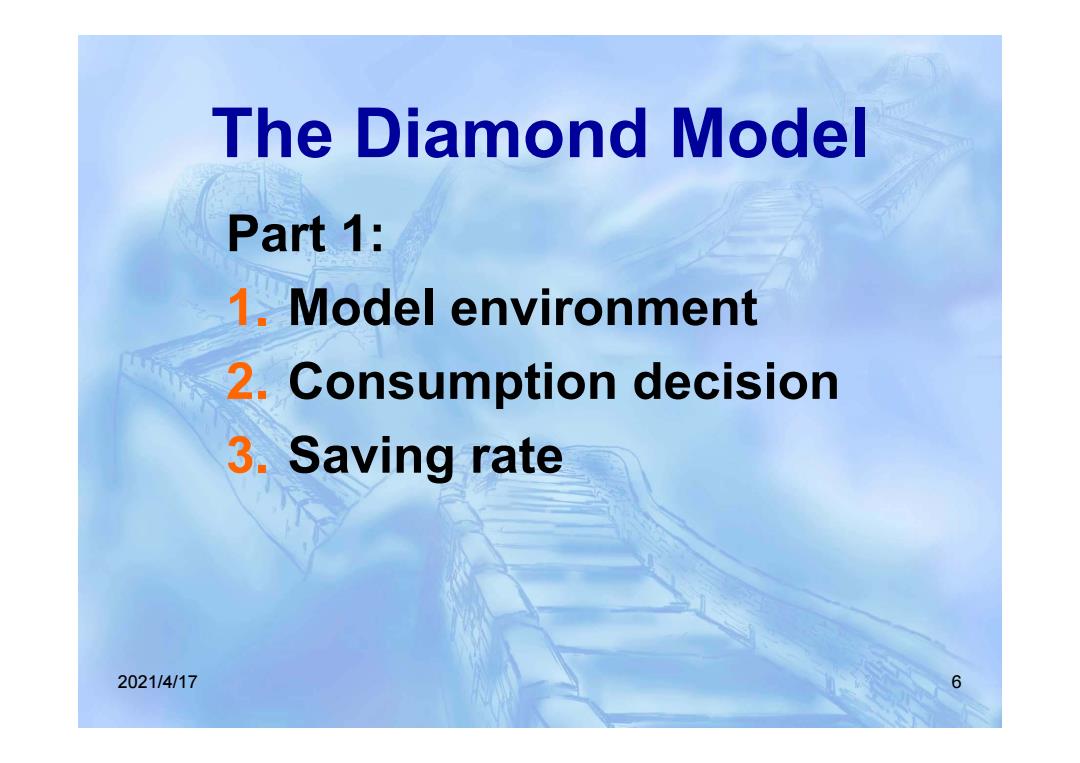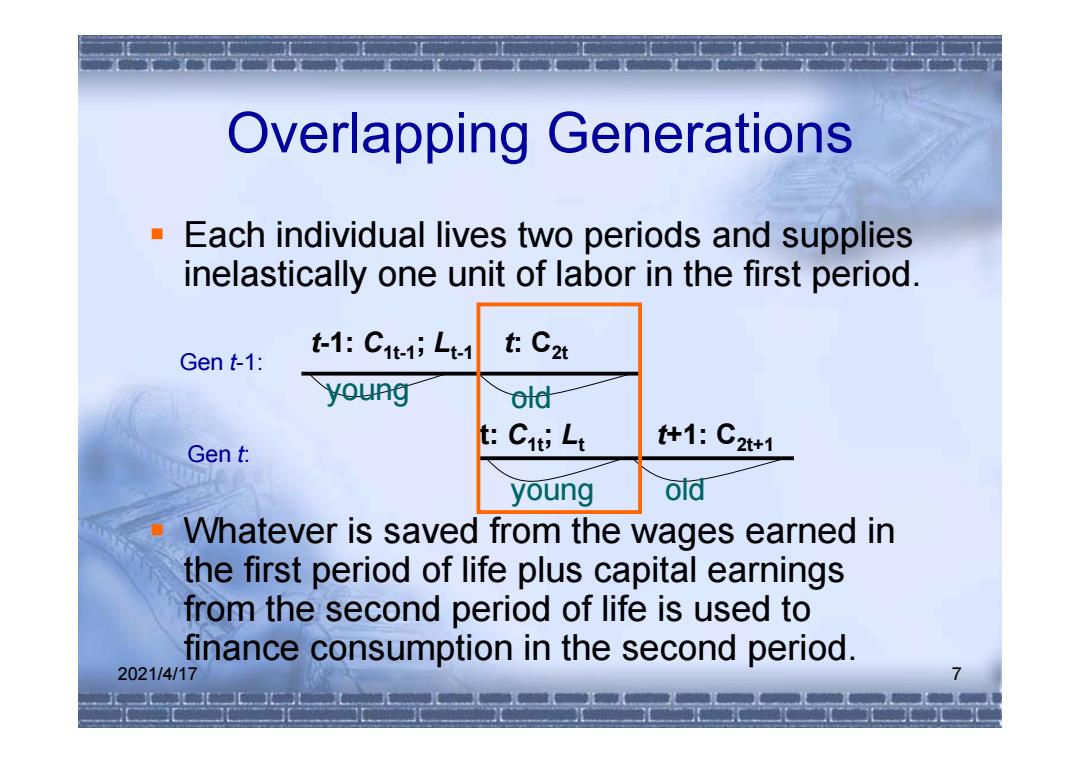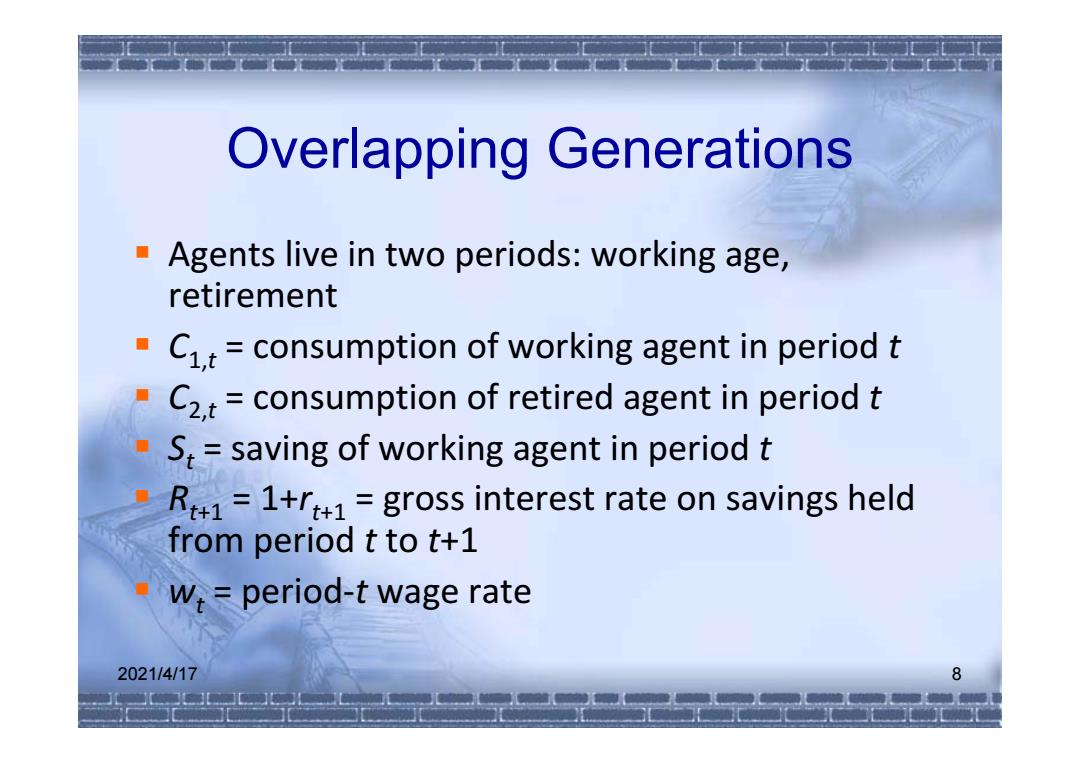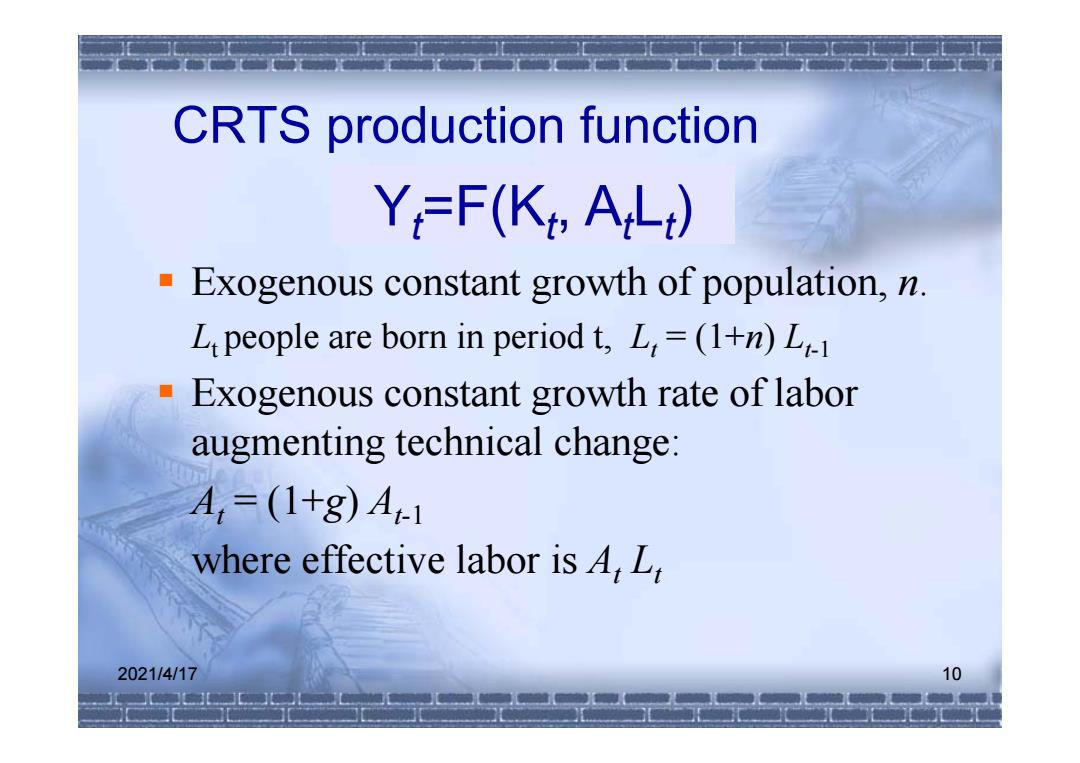
The Diamond Model Part 1: 1.Model environment 2.Consumption decision 3.Saving rate 2021/4/17 6
2021/4/17 6 The Diamond Model Part 1: 1. Model environment 2. Consumption decision 3. Saving rate

Overlapping Generations Each individual lives two periods and supplies inelastically one unit of labor in the first period. Gen t-1: t-1:C1t1;Lt1 t:C2t young old Gen t: t:Cuti Lt +1:C2t+1 young old Whatever is saved from the wages earned in the first period of life plus capital earnings from the second period of life is used to finance consumption in the second period. 2021/4/17
2021/4/17 7 Overlapping Generations Each individual lives two periods and supplies inelastically one unit of labor in the first period. Whatever is saved from the wages earned in the first period of life plus capital earnings from the second period of life is used to finance consumption in the second period. t-1: C1t-1; Lt-1 young old Gen t-1: t: C2t t: C1t; Lt young old Gen t: t+1: C2t+1

Overlapping Generations Agents live in two periods:working age, retirement C1,t=consumption of working agent in period t C2.t consumption of retired agent in period t S:=saving of working agent in period t R1=1+r+1=gross interest rate on savings held from period t to t+1 w,=period-t wage rate 2021/4/17 8
2021/4/17 8 Overlapping Generations Agents live in two periods: working age, retirement C1,t = consumption of working agent in period t C2,t = consumption of retired agent in period t St = saving of working agent in period t Rt+1 = 1+rt+1 = gross interest rate on savings held from period t to t+1 wt = period‐t wage rate

Preference: U,= 1 1-01+p1-0 CRRA coefficient:0>0,determines the willingness of a household to shift first-period consumption to the second period. the smaller is 0 the more willing is the household to shift consumption to gain utility, the higher is 0 the more risk-averse the household is which means she prefers to consume current income in the current period and would ask for a high return on savings before he shifts a small fraction of income. Time discount rate:p>-1 If p is greater(smaller)than zero the household places a greater (lower)weight on first period consumption than on second-period consumption 2021/4/17 9
2021/4/17 9 Preference: CRRA coefficient: θ>0, determines the willingness of a household to shift first-period consumption to the second period. • the smaller is θ the more willing is the household to shift consumption to gain utility, • the higher is θ the more risk-averse the household is which means she prefers to consume current income in the current period and would ask for a high return on savings before he shifts a small fraction of income. Time discount rate: > -1 • If is greater (smaller) than zero the household places a greater (lower) weight on first period consumption than on second-period consumption. 1 1 1 21 1 1 11 t t t C C U

CRTS production function Y=F(K AL) Exogenous constant growth of population,n. L people are born in period t,L=(1+n)L Exogenous constant growth rate of labor augmenting technical change: A,=(1+8)A1 where effective labor is 4,L 2021/4/17 10
2021/4/17 10 CRTS production function Exogenous constant growth of population, n. Lt people are born in period t, Lt = (1+n) Lt-1 Exogenous constant growth rate of labor augmenting technical change: At = (1+g) At-1 where effective labor is At Lt Yt=F(Kt, AtLt)